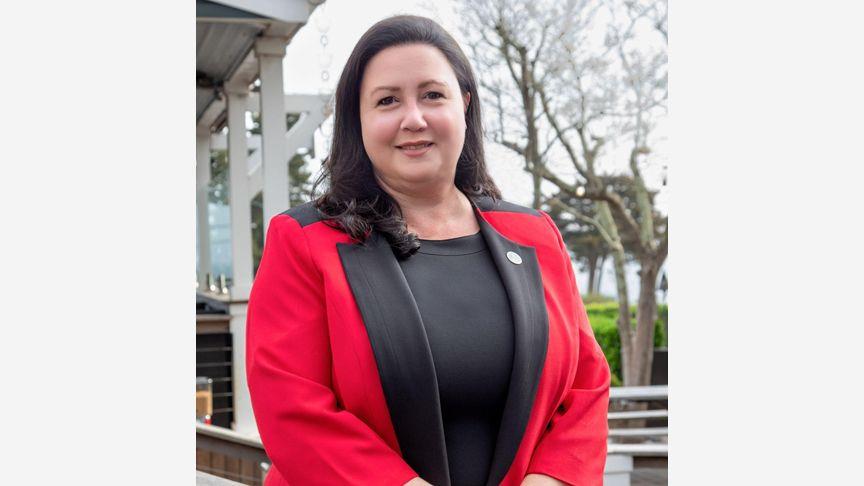In the heart of Southampton Town in Hampton Bays, near the Shinnecock Canal, a proposed Battery Energy Storage System (BESS) is stirring up a storm of public outcry. With growing apprehension about the potential impact of such a project, the local community came together to express their concerns during a town board meeting held on July 11th.
Amid the heated deliberations, Town Councilwoman Cynthia McNamara. amplified the residents' anxieties, stating, "The residents' voices were unheard during the original decision-making process to implement the BESS code." She explained that her constituents had not been adequately educated about the implications of a BESS, particularly one exceeding a capacity of 600 kWh.
Battery Energy Storage Systems, often referred to as BESS, operate on the premise of storing energy using rechargeable batteries. The energy collected during low demand is held within these systems and then released at peak demand. This could lessen the need for energy production during those peak periods. However, larger systems have stirred up controversy due to the risks involved.
McNamara presented her colleagues and the public with an email from an alternative energy project consultant. This individual had suggested that the town was not obliged to use large residential parcels for BESS installations. They argued that the town had many other parcels. "Even this external consultant agreed that the proposed 50-foot setback for these facilities was inadequate," McNamara noted.
Further fueling the debate, McNamara disclosed her findings from independent research that unveiled potential hazards associated with all types of lithium-ion batteries commonly used in BESS. One significant incident she highlighted occurred in Warwick, NY, where a Powin system caught fire due to rainwater intrusion. "This clearly illustrates that even these 'safe' systems are not impervious to failure," she pointed out.
These fears were heightened when a report by News 12 revealed that dozens of toxins had been found in air samples from the Warwick fire site. The authorities maintained that the toxin levels were within a 'safe range,' but McNamara expressed her doubts. "I recall the PFOS contamination incident in 2019," she said, "where what was initially considered a 'safe' threshold was later dramatically reduced by the EPA. We cannot ignore these precedents."
Prompted by the mounting concerns of her constituents and research, McNamara called for a moratorium on BESS, allowing for further study and potential amendments to the town's code. "While I acknowledge New York's ambitious goals concerning energy storage," she asserted, "we must not compromise the safety of our residents in pursuit of these goals."
McNamara proposed a change to the town's approach to regulating BESS systems. She expressed her belief that a small-scale 600 kWh system and a 100,000 kWh system should not be regulated similarly. "Pause the process and revise the code with substantial input from the community and advice from professionals," she said.
The councilwoman also took issue with the methods employed by the Chair of the Sustainability Committee. McNamara revealed that the Chair had sent an email asking the committee members to attend the hearing and be briefed on talking points by a paid Town Consultant. "Such methods unfairly influence the discourse at public hearings," she stated firmly. "I have made my dissent known to the entire Town Board."
 |
| Cynthia McNamara Cynthia McNamara |
 |
| Example of Battery Energy Storage System Cynthia McNamara |
While the proposal for a BESS facility has faced substantial opposition, the active engagement of the community in the decision-making process is seen as a crucial step towards better, safer energy policies. The ongoing debate underscores the importance of improving public understanding of BESS technology, its potential risks and benefits, and the critical need for extensive environmental impact assessments. It also highlights the importance of open dialogue between all stakeholders, ensuring everyone affected can voice their concerns and opinions.
Public education was a key theme during the meeting, especially about BESS technology and its risks. Many voiced concerns about the possibility of toxin leakage in the event of a fire, potential pollution of Shinnecock Bay, and increased traffic and congestion in an area already known for gridlock, particularly in an accident or catastrophic event at the proposed site. The bay, recently declared a "Hope Spot" by the international organization Mission Blue, further emphasizes the potential environmental implications of the project.
Despite this outcry, some believe that the town code was developed in good faith, and the current situation arose due to an unusual sequence of events, notably the Covid-19 pandemic. The debate surrounding BESS facilities and the community's right to voice its concerns in the decision-making process signals a healthy democratic process toward creating more robust and safer policies.
Senator Anthony Palumbo weighed in on the situation, saying, “I completely understand the concerns of local residents about the siting of this facility in proximity to a residential neighborhood. This is a local, not state, decision. The Planning Board, based on input from residents, not Albany bureaucrats, should have the final say on if and where these sites are located.”
While there is a broad consensus that green energy should be pursued and BESS technology is part of the solution, the ongoing debate emphasizes the need for a better public understanding of the technology, its potential risks, and its benefits. It also calls for thorough environmental impact assessments and open dialogue between all stakeholders. With all eyes on the upcoming July 25th meeting, the town board will need to consider all these factors carefully before making a decision that will not only affect the residents of Hampton Bays but potentially set a precedent for future BESS installations.
